August 7
2019 August 7
Jeremy Tatum writes: Ted Dobie’s caterpillar of Orgyia pseudotsugata, shown on July 21, and again when full grown in close-up on August 1 afternoon, has now pupated in a silken cocoon, incorporating some of the larval hairs. The adult moth will probably eclode in a couple of weeks.
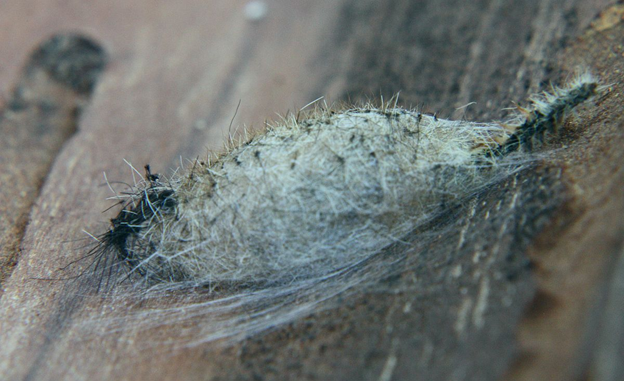
Orgyia pseudotsugata (Lep.: Erebidae – Lymantriinae) Jeremy Tatum
Jeremy continues: This morning I visited the Nature Houses at Swan Lake and in Goldstream Park, and I found one moth at each. This one at Swan Lake:
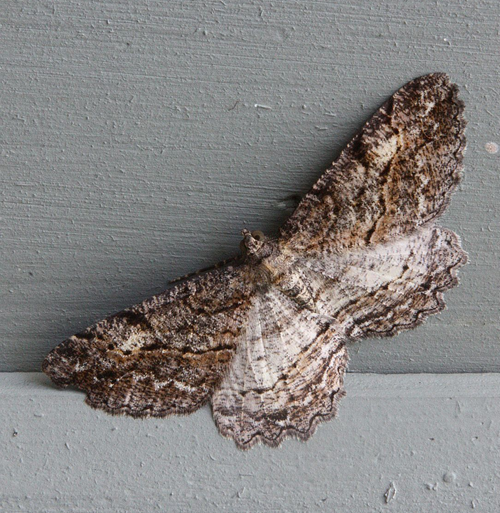
Neoalcis californiaria (Lep.: Geometridae) Jeremy Tatum
…and this one at Goldstream Park, confirmed by Libby Avis as a Peppered Moth Biston betularia. After millions of years of Darwinian evolution by variation and natural selection, this one seems to have evolved perfect cryptic coloration for a concrete background!
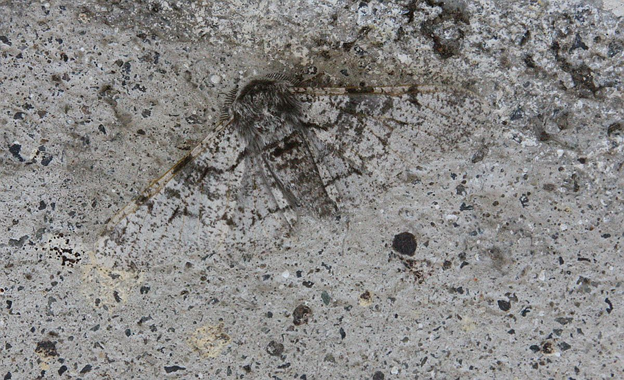
Biston betularia (Lep.: Geometridae) Jeremy Tatum
Two photographs of a Silver-spotted Tiger Moth Lophocampa argentata by Bill McMillan:
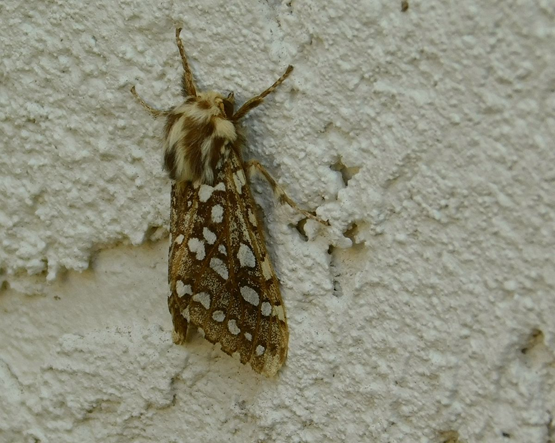
Lophocampa argentata (Lep.: Erebidae – Arctiinae) Bill McMillan
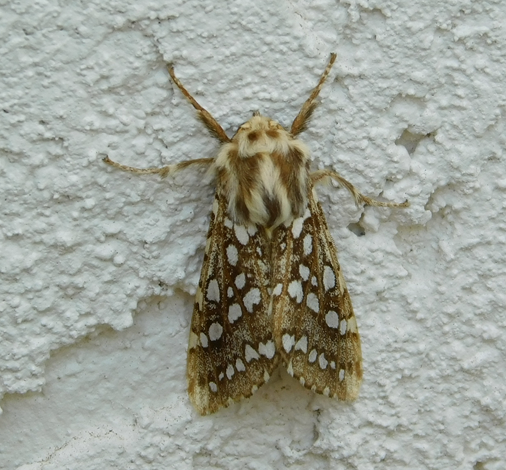
Lophocampa argentata (Lep.: Erebidae – Arctiinae) Bill McMillan
A miscellany from Cheryl Hoyle:
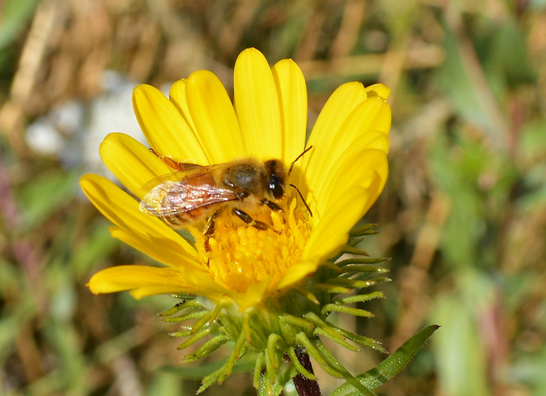
Honey Bee Apis mellifera (Hym.: Apidae) Cheryl Hoyle
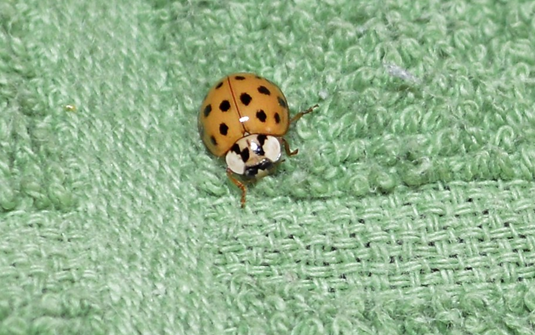
Harmonia axyridis (Col.: Coccinellidae) Cheryl Hoyle
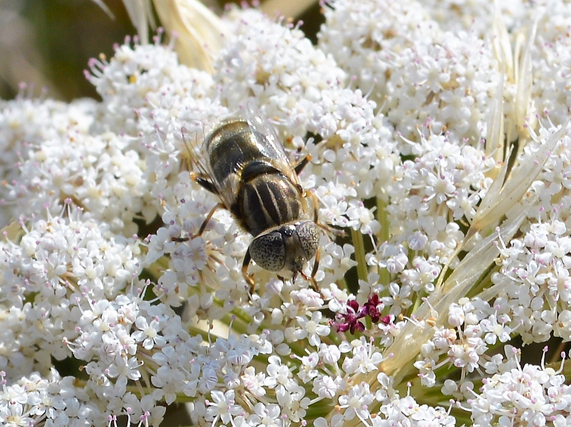
Eristalinus aeneus (Dip.: Syrphidae) Cheryl Hoyle
Jochen Möhr’s moths in Metchosin this morning:
1 Campaea perlata
1 Eulithis xylina
4 Perizoma curvilinea
1 Nemoria darwiniata
He writes: Pine Whites are now regularly fluttering up here at 160 to 200 m above sea level.
